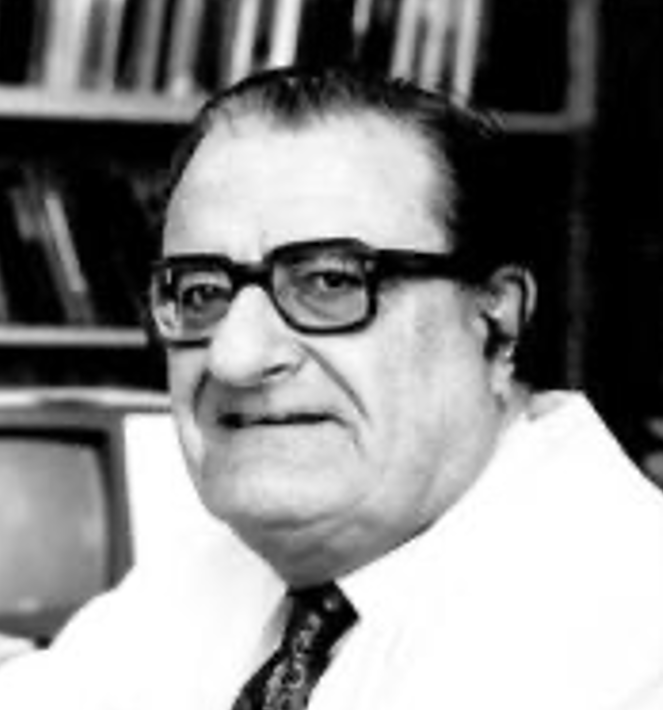Dewar Lecture

Michael Dewar was born in Ahmednagar, India on the 24th of September 1918, where his father worked as a British civil servant. He was sent to England aged 8 where he was first educated at Winchester before moving to the University of Oxford where he received his BA, MA and DPhil degrees. He was a chemist of diverse and penetrating insights.
He first came to the attention of the chemical world with a publication in Nature in 1945, in which he formulated the mould metabolite stipitatic acid (the structure of which had baffled organic chemists for some years) with a seven- membered ring: this may be said to have been the start of research into non-benzenoid aromatic systems, which was followed up extensively in laboratories all over the world. His first book, “The Electronic Theory of Organic Chemistry", Clarendon Press, Oxford, 1949, was the first of its kind to examine organic reactions from the point of view of molecular orbital (MO) theory. He was appointed to the Chair in Chemistry at Queen Mary College of the University of London in 1951. During his time at QM, Dewar developed PMO Theory a rigorous perturbational MO treatment whose basis lies in quantum mechanics. He published six classic papers on perturbation molecular orbital (PMO) theory-back-to-back in the Journal of the American Chemical Society. He applied this new theory to the structure of metal-olefin π-complexes containing dative bonds where the donor and/or acceptor orbitals are MOs.
This interpretation later became known as the Dewar-Chatt-Duncanson Model. Dewar was elected to Fellowship of the Royal Society for his work at QM but he shocked the world when he moved to the Kharasch Chair at the University of Chicago in 1959, mainly because the Physics Department was favoured with a new building ahead of Chemistry! He made another surprising move to the first Robert A. Welsh chair at the University of Texas, Austin a few years later where he exploited the new and powerful computer they had there at the time. He used this computer to develop semi-empirical MO methods known as SCF-MO, MINDO, MNDO, DEWAR-PI, AM1, and SAM-1 the basis of which are still in use today. He made his final move to the University of Florida as Graduate Research Professor, in 1989 before he retired there in 1994 as Professor Emeritus.
The honours accorded to Michael Dewar included the Tilden and Robert Robinson Lectureships of the Chemical Society (1954, and 1974, respectively), the Davy Medal of the Royal Society of London (1982), the James Flack Norris Award of the American Chemical Society (1984), the Tetrahedron Prize for Creativity in Organic Chemistry (1989), and the American Chemical Society Award for Computers in Chemistry (1994). It is especially notable that he was a member of both the National Academy of Sciences and the Royal Society of London, a status achieved by extremely few scientists. In view of the significance of his contributions to chemistry, it is surprising that the Nobel Prize was not to be among his many honours. He died on October 10, 1997, in Gainesville, Florida, at the age of 79, his wife having passed away 3 years earlier. He is survived by two sons C. E. Steuart Dewar and Robert B. K. Dewar who attended the inaugural Dewar lecture. A bust of Michael Dewar can currently be found on the first floor of the Joseph Priestley building.
Previous Dewar Lecture
| Date | Lecturer | Title |
| 2020-21 | Professor Kelly Chibale FRSSAf (University of Cape Town) | From synthetic organic chemistry to designing human malaria parasite kinase inhibitors' |
| 2019-20 | Professor Sally Price FRS (University College London) | Can we predict how pharmaceuticals will crystallize? |
| 2018-19 | Professor Dame Margaret Brimble FRS (University of Auckland) | Nature’s Medicine Chest: Opportunities for Synthesis and Drug Discovery |
| 2017-18 | Professor Varinder Aggarwal FRS (Bristol) | Assembly Line Synthesis |
| 2016-17 | Professor Harry Anderson FRS (University of Oxford) | Synthesis and photophysics of light harvesting nanorings: flow and energy charge in porphyrin arrays |
| 2015-16 | Professor Judith Howard FRS (University of Durham) | Unusual structures related to Dewar's work: a crystallographer's story |
| 2014-15 | Professor David Leigh FRS (University of Manchester) | The big and the small things about macrocycles. |
| 2013-14 | Professor Graham Hutchings FRS (Cardiff) | An exploration of gold-catalysis |
| 2012-13 | Professor C A Hunter, FRS (Sheffield) | The Anatomy of Complex Recognition Interfaces |
| 2011-12 | Professor B L Feringa ForMemRS(Netherlands) | The art of building small. |
| 2011-12 | Professor B L Feringa ForMemRS(Netherlands) | From molecular switches to molecular motors |
| 2009-10 | Professor D G Blackmond (Imperial College London) | Models for the origin of biological homochirality |
| 2008-09 | Professor F A Armstrong, FRS (Oxford) | Rapid and efficient production and oxidation of hydrogen by air-sensitive metalloenzymes: electrochemistry, mechanisms, and implications for life and energy |